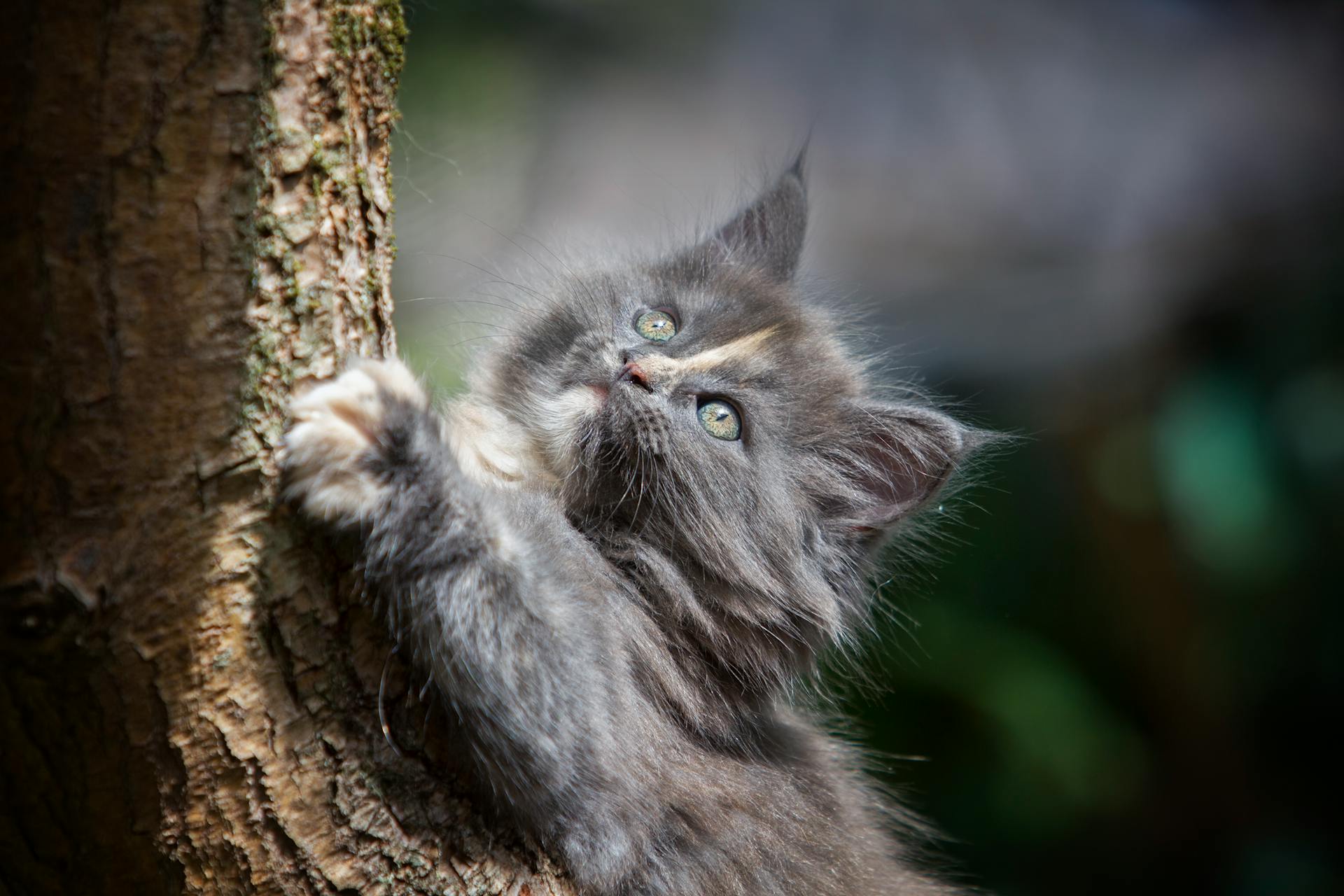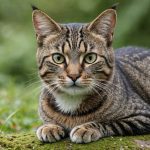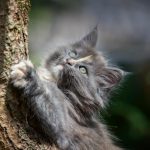Creating a secure outdoor space for cats with Feline Leukemia Virus (FeLV) is essential for their well-being and happiness. This unique challenge offers the opportunity to design an enriching environment that meets their needs. By understanding FeLV and its implications, you can establish a safe haven filled with stimulating activities while ensuring protection from potential hazards. Discover innovative strategies to transform your outdoor area, fostering a vibrant lifestyle for your furry companions. Your commitment to their safety can provide them with joy and comfort, enhancing their quality of life.
Understanding Feline Leukemia Virus (FeLV)
Feline Leukemia Virus (FeLV) is a significant concern in cat health, affecting a cat’s immune system and leading to various health issues. It is a contagious virus that is primarily spread through close contact, such as grooming or sharing food bowls. FeLV is one of the most common infectious diseases in cats, and it can have serious implications for their well-being.
A voir aussi : Strategic Tech Solutions for UK Farmers: Coexisting with Badgers While Protecting Livestock
Impact on Cats
FeLV can lead to a weakened immune system, making cats more susceptible to infections and diseases. It may also cause anaemia and increase the risk of developing certain types of cancer. The virus can affect cats of all ages, but kittens and young cats are particularly vulnerable.
FeLV Symptoms
Recognising FeLV symptoms early can help in managing the disease effectively. Common symptoms include:
A découvrir également : Welcoming a New Kitten: Expert Tips for Introducing Your Corgi with Strong Herding Instincts
- Lethargy and loss of appetite
- Persistent fever
- Swollen lymph nodes
- Weight loss and poor coat condition
Creating a Supportive Environment
For cats diagnosed with FeLV, providing a supportive environment is crucial. This includes regular veterinary check-ups, a nutritious diet, and minimising stress. Ensuring they live in a clean and safe environment can help improve their quality of life and potentially extend their lifespan.
Designing a Secure Outdoor Enclosure
Creating a secure outdoor cat enclosure is essential for ensuring your cat’s safety while allowing them to enjoy the outdoors. These enclosures provide a safe space where cats can explore without the risks associated with free roaming.
Key Features of an Ideal Outdoor Cat Enclosure
An ideal outdoor cat enclosure should be spacious enough for your cat to move comfortably and engage in natural behaviours like climbing and scratching. It should have sturdy walls and a secure roof to prevent escapes and protect against predators. Including platforms at different heights can stimulate your cat’s curiosity and provide exercise opportunities.
Materials and Construction Tips
When designing an outdoor cat enclosure, select materials that are both durable and safe. Galvanised steel mesh is an excellent choice for walls, as it is strong and resistant to rust. The frame should be constructed from treated wood or metal to withstand weather conditions. Ensure all materials are non-toxic and free from sharp edges.
Importance of Proper Ventilation and Shelter
Proper ventilation is crucial to maintain a comfortable temperature within the enclosure. Incorporate shaded areas and waterproof shelters to protect your cat from extreme weather. This ensures they have a safe retreat during rain or intense sun, enhancing their overall well-being.
Choosing Cat-Friendly Plants for Outdoor Spaces
Creating an outdoor space that is both enriching and safe for cats, especially those with FeLV, involves thoughtful selection of cat-friendly plants. Ensuring your garden is free from toxic plants is crucial to prevent accidental ingestion that could harm your feline friend.
Non-Toxic Plants Safe for Cats
When planning your garden, consider incorporating non-toxic plants that are safe for cats. Some excellent choices include:
- Catnip: Not only is it safe, but it also provides sensory stimulation.
- Lemongrass: Offers a pleasant aroma and is harmless to cats.
- Spider Plant: Known for its air-purifying qualities and safety for cats.
Identifying and Avoiding Harmful Plants
Identifying toxic plants is essential to maintain a safe garden environment. Plants such as lilies, azaleas, and oleander should be avoided, as they can cause severe health issues if ingested. Regularly inspect your garden to ensure these plants are not present.
Tips for a Safe and Enriching Garden
To create a safe and enriching garden, consider adding a variety of textures and heights. Incorporate climbing structures and shaded areas for relaxation. Regularly check for any new plant growth that might be harmful, ensuring your garden remains a safe haven for your cat.
Enrichment Activities for Outdoor Play
Creating engaging outdoor activities is essential for keeping your cat happy and healthy. Cats thrive on both physical and mental stimulation, and incorporating a variety of enrichment activities can significantly enhance their outdoor experience.
Types of Activities for Engagement
To stimulate your cat’s natural instincts, consider activities that promote both physical exercise and mental engagement. Encourage your cat to explore by setting up a series of climbing structures. These can be as simple as shelves or ramps that allow them to jump and climb safely.
Incorporating Climbing Structures and Hiding Spots
Cats love to climb and hide, so providing these opportunities in your outdoor space is vital. Install sturdy platforms at various heights and include tunnels or enclosed spaces for hiding. This not only satisfies their curiosity but also offers them a sense of security.
Safe Toys and Games for Outdoor Play
Interactive toys such as feather wands or balls can be great for playtime. Ensure that all toys are safe and durable, avoiding small parts that could be swallowed. Engaging your cat in games like fetch or chase can help maintain their agility and provide much-needed exercise. By incorporating these elements, you create a cat-friendly environment that supports their well-being.
Safety Precautions for Outdoor Environments
Ensuring cat safety in outdoor environments is crucial, especially for those with FeLV. Awareness of outdoor hazards can prevent potential risks and enhance your cat’s well-being.
Common Outdoor Hazards
Outdoor spaces pose various threats to FeLV-positive cats. Toxic plants, sharp objects, and traffic are significant concerns. Additionally, encounters with other animals may expose them to infections. Regularly inspect the area for these hazards to maintain a safe environment.
Monitoring and Supervising Outdoor Time
Implementing precautionary measures is essential for safe outdoor play. Supervise your cat’s activities to prevent them from wandering into dangerous areas. Consider using a leash or a secure enclosure to limit their range. This not only ensures their safety but also allows you to intervene quickly if necessary.
Importance of Vaccination and Health Checks
Regular vaccination and health checks are vital for outdoor cats. Even though FeLV-positive cats have a compromised immune system, vaccinations can help protect them from additional diseases. Frequent veterinary visits ensure early detection and management of health issues, promoting a healthier outdoor experience. By prioritising these measures, you safeguard your cat’s health while they enjoy the outdoors.
Managing FeLV in an Outdoor Setting
Caring for FeLV-positive cats in an outdoor environment requires thoughtful management to ensure their well-being. Understanding the implications of outdoor exposure is crucial, as it can influence the progression of the disease.
Best Practices for Outdoor Cat Care
To manage FeLV in an outdoor setting, it is essential to create a safe and controlled environment. This includes using secure enclosures to prevent contact with other animals, which could expose them to additional infections. Regularly inspect the outdoor area for hazards like toxic plants or sharp objects.
Understanding Outdoor Exposure
Outdoor exposure for FeLV-positive cats can potentially accelerate the disease’s progression due to stress and environmental factors. Limiting their time outside and ensuring they have access to shaded and sheltered areas can help mitigate these risks.
Building a Routine for Health Monitoring
Establishing a routine for health management is vital. Schedule consistent veterinary check-ups to monitor their condition and adjust care plans as needed. Regular health monitoring allows for early detection of complications, ensuring timely intervention. Keeping a detailed record of their health status can assist veterinarians in providing tailored care. Through diligent cat care and health management, you can enhance the quality of life for FeLV-positive cats in outdoor settings.
Community Involvement and Support
Engaging with community support is vital for those caring for FeLV-positive cats. Connecting with local cat rescue organisations can provide valuable resources and guidance. These organisations often have experience in managing FeLV cases and can offer advice on best practices and potential challenges. They may also have networks that can assist with medical care or adoption opportunities for FeLV-positive cats.
FeLV advocacy is another crucial aspect of community involvement. Raising awareness about FeLV can help reduce stigma and encourage more people to support affected cats. This can be achieved through community events, social media campaigns, or by collaborating with local veterinarians to provide educational materials. Advocacy efforts can lead to increased funding and resources for FeLV research and support services.
Sharing experiences and resources with other FeLV caregivers fosters a supportive environment. Joining online forums or local support groups can be beneficial. These platforms allow caregivers to exchange tips, discuss challenges, and offer emotional support. By participating in these communities, caregivers can feel less isolated and more empowered to provide the best care possible for their FeLV-positive cats. Engaging in community involvement not only benefits individual cats but also strengthens the broader network of FeLV support.
Legal Considerations for Outdoor Cat Spaces
Navigating the local laws concerning outdoor cats is crucial for responsible pet ownership. Different regions have varying pet regulations that dictate how cats can be managed outdoors. These laws aim to balance the freedom of pets with community safety and environmental responsibility.
Overview of Local Laws
Local laws regarding outdoor cats can include leash laws, licensing requirements, and specific restrictions on free-roaming cats. Some areas mandate that cats remain indoors or within controlled environments like enclosures. Understanding these laws helps prevent legal issues and ensures the well-being of your pet and the community.
Implications of Outdoor Cat Ownership
Owning an outdoor cat involves responsibilities beyond basic care. Owners must ensure their cats do not become nuisances or threats to local wildlife. This includes keeping them from wandering onto neighbours’ properties or causing damage. Adhering to local regulations can prevent fines and foster positive community relations.
Tips for Compliance and Safety
To comply with regulations while promoting safety, consider the following:
- Secure outdoor enclosures: These provide a controlled environment that adheres to local laws.
- Microchipping and identification tags: Ensure your cat can be easily identified if found roaming.
- Regularly review local laws: Stay informed about any changes to ensure continuous compliance.
By understanding and respecting local laws, you can create a safe and legal outdoor space for your cat.
Resources and Further Reading
Staying informed about FeLV and general cat health is essential for providing the best care. There are numerous cat care resources available that offer valuable insights and guidance.
For those seeking comprehensive information, consider exploring recommended books such as “The Cat Owner’s Home Veterinary Handbook.” This book covers a wide range of topics, including FeLV management. Additionally, websites like the American Association of Feline Practitioners provide up-to-date FeLV information and pet care advice.
Engaging with online communities can also be incredibly beneficial. Platforms like TheCatSite.com host forums where cat owners share experiences and advice. These forums are excellent for connecting with others who understand the challenges of caring for FeLV-positive cats.
It’s crucial to stay informed about the latest developments in cat care. Subscribe to newsletters from reputable veterinary organisations, which often include updates on FeLV research. By accessing these pet care guides, you can ensure your knowledge remains current.
Remember, the more informed you are, the better equipped you’ll be to make decisions that enhance your cat’s quality of life.
















